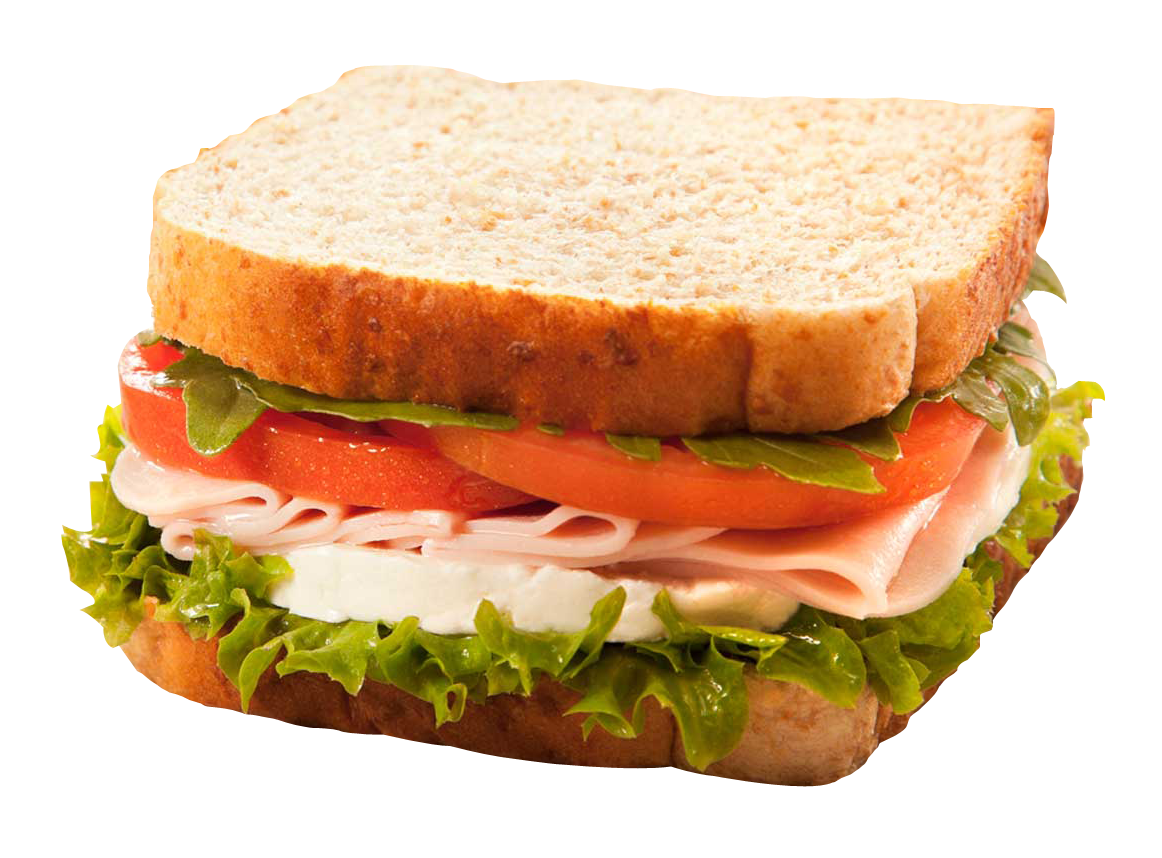
This image has format transparent PNG with resolution 1162x858.
You can download this image in best resolution from this page and use it for design and web design.
sandwich PNG image with transparent background you can download for free, just click on download button.
A sandwich is a food typically consisting of vegetables, sliced cheese or meat, placed on or between slices of bread, or more generally any dish wherein bread serves as a container or wrapper for another food type. The sandwich began as a portable finger food in the Western world, though over time it has become prevalent worldwide.
Sandwiches are a popular type of lunch food, taken to work, school, or picnics to be eaten as part of a packed lunch. The bread may be plain or be coated with condiments, such as mayonnaise or mustard, to enhance its flavour and texture. As well as being homemade, sandwiches are also widely sold in restaurants and can be served hot or cold. There are both savoury sandwiches, such as deli meat sandwiches, and sweet sandwiches, such as a peanut butter and jelly sandwich.
The sandwich is named after its supposed inventor, John Montagu, 4th Earl of Sandwich. The Wall Street Journal has described it as Britain's "biggest contribution to gastronomy."
The modern concept of a sandwich using slices of bread as found within the West can arguably be traced to 18th-century Europe. However, the use of some kind of bread or bread-like substance to lie under (or under and over) some other food, or used to scoop up and enclose or wrap some other type of food, long predates the eighteenth century, and is found in numerous much older cultures worldwide.
The ancient Jewish sage Hillel the Elder is said to have wrapped meat from the Paschal lamb and bitter herbs in a soft matzah—flat, unleavened bread—during Passover in the manner of a modern wrap made with flatbread. Flat breads of only slightly varying kinds have long been used to scoop or wrap small amounts of food en route from platter to mouth throughout Western Asia and northern Africa. From Morocco to Ethiopia to India, bread is baked in flat rounds, contrasting with the European loaf tradition.
During the Middle Ages in Europe, thick slabs of coarse and usually stale bread, called "trenchers," were used as plates. After a meal, the food-soaked trencher was fed to a dog or to beggars at the tables of the wealthy, and eaten by diners in more modest circumstances. The immediate culinary precursor with a direct connection to the English sandwich was to be found in the Netherlands of the seventeenth century, where the naturalist John Ray observed that in the taverns beef hung from the rafters "which they cut into thin slices and eat with bread and butter laying the slices upon the butter"—explanatory specifications that reveal the Dutch belegde broodje, open-faced sandwich, was as yet unfamiliar in England.
Initially perceived as food that men shared while gaming and drinking at night, the sandwich slowly began appearing in polite society as a late-night meal among the aristocracy. The sandwich is named after John Montagu, 4th Earl of Sandwich, an eighteenth-century English aristocrat. It is said that he ordered his valet to bring him meat tucked between two pieces of bread. It is commonly said that Lord Sandwich was fond of this form of food because it allowed him to continue playing cards, particularly cribbage, while eating, without using a fork, and without getting his cards greasy from eating meat with his bare hands. The rumour in its familiar form appeared in Pierre-Jean Grosley's Londres (Neuchâtel, 1770), translated as A Tour to London in 1772; Grosley's impressions had been formed during a year in London in 1765. The sober alternative is provided by Sandwich's biographer, N. A. M. Rodger, who suggests Sandwich's commitments to the navy, and to politics and the arts, mean the first sandwich was more likely to have been consumed at his desk.
The sandwich's popularity in Spain and England increased dramatically during the nineteenth century, when the rise of industrial society and the working classes made fast, portable, and inexpensive meals essential. In London, for example, at least seventy street vendors were selling ham sandwiches by 1850; during that decade sandwich bars also became an important form of eating establishment in western Holland, typically serving liver and salt beef sandwiches.
In the US, the sandwich was first promoted as an elaborate meal at supper. By the early 20th century, as bread became a staple of the American diet, the sandwich became the same kind of popular, quick meal as was already widespread in the Mediterranean.
In this page you can download free PNG images: Sandwich PNG images free download